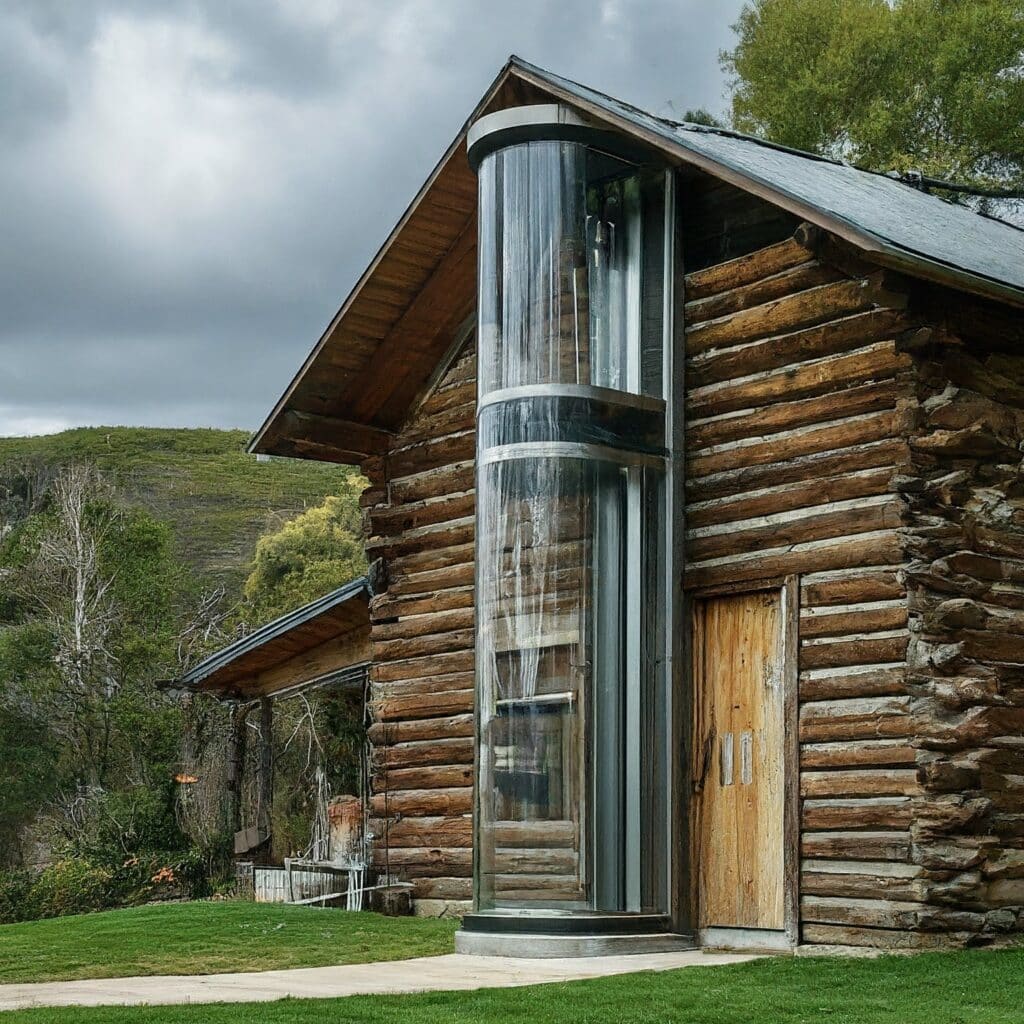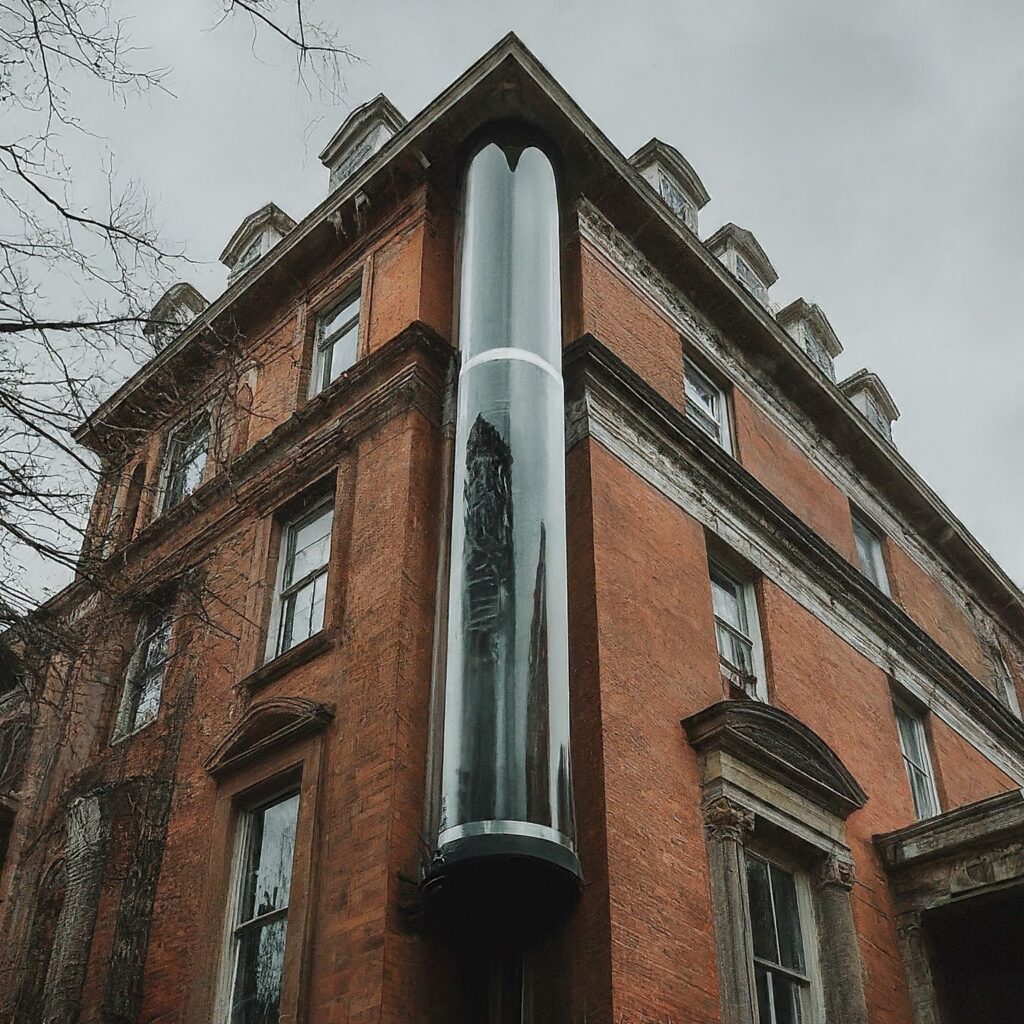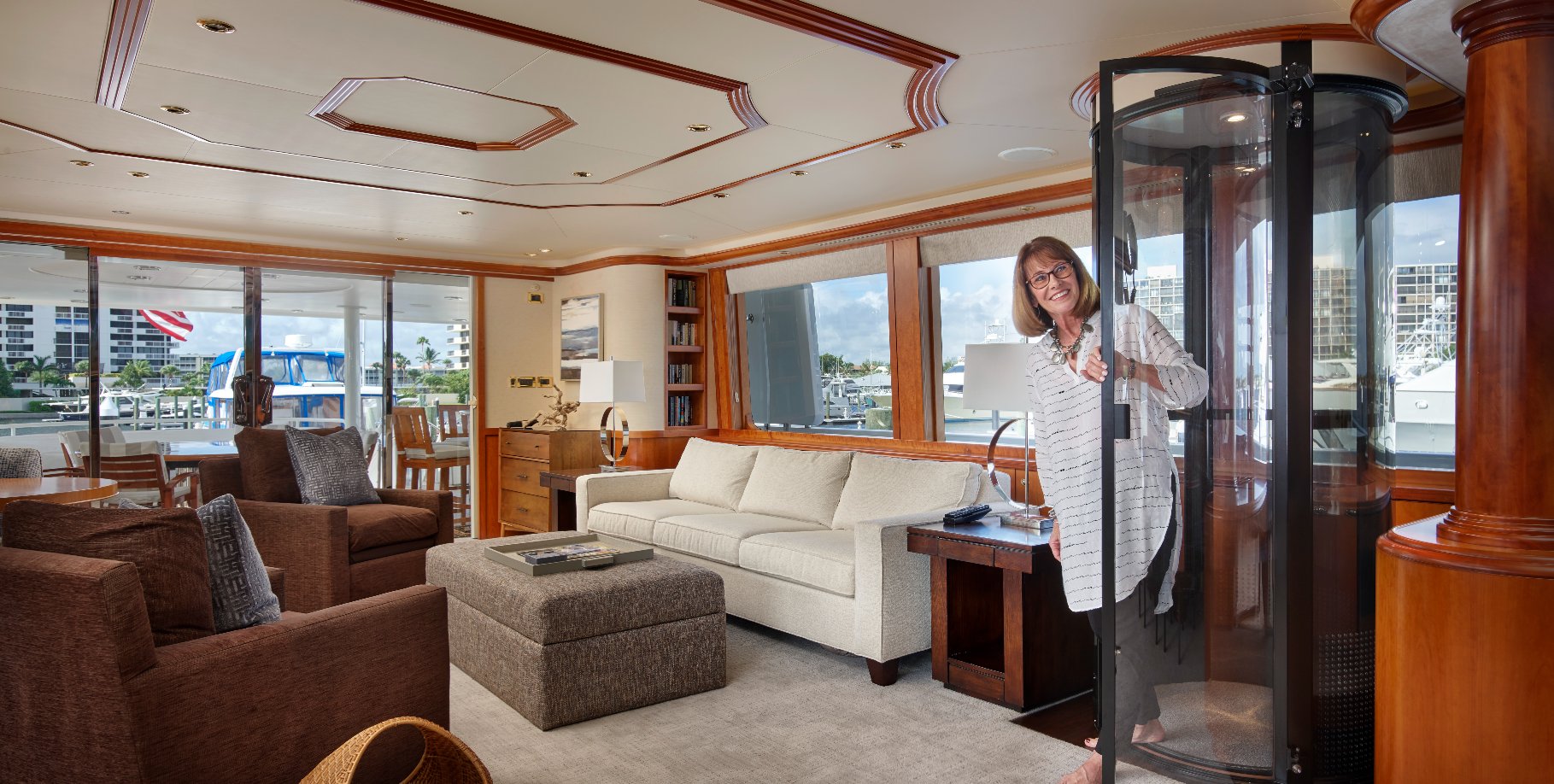Are you considering installing a corner elevator in your home?
This article will guide you through everything you need to know about corner elevators, with a special focus on pneumatic elevators.
From understanding what a corner elevator is to why it might be the best home elevator for you, we’ve got you covered.
By the end, you’ll be well-equipped to make an informed decision about adding this feature to your home.
What is a Corner Elevator?
A corner elevator is a type of home elevator designed to fit snugly into the corner of a room.
Its compact design maximizes space efficiency, making it a popular choice for homeowners looking to add accessibility without sacrificing too much room.
Corner elevators are often sleek and modern, blending seamlessly with the home’s decor.
They offer a stylish solution to the practical problem of moving between floors, especially for individuals with mobility issues.
Why Choose a Corner Elevator?
Choosing a corner elevator comes with several advantages.
Firstly, their installation is relatively straightforward, often requiring minimal structural modifications.
This makes them a cost-effective choice compared to other types of home elevators.
Additionally, corner elevators are known for their space-saving design.
They utilize corners that might otherwise go unused, making them ideal for homes where space is at a premium.
Among the different types of corner elevators, pneumatic elevators are gaining popularity.
But what exactly are pneumatic elevators?
Simply put, they use air pressure to move the cab between floors.
Unlike traditional elevators that rely on cables and counterweights, pneumatic elevators operate with a vacuum system.
This not only makes them safer but also quieter and more energy-efficient.
How Pneumatic Corner Elevators Work
Pneumatic elevators work on a simple principle: they create a vacuum above the elevator cab to lift it and release the vacuum to lower it.
Here’s a step-by-step breakdown:
- Initial Position: The cab is at the ground floor.
- Lifting: A vacuum pump removes air from the top of the shaft, creating low pressure above the cab.
- Movement: The higher pressure below the cab pushes it upward.
- Stopping: The vacuum level is adjusted to stop the cab at the desired floor.
- Lowering: Air is gradually allowed back into the shaft, lowering the cab.
Advantages of Corner Elevators
Pneumatic elevators offer several distinct advantages over traditional elevators.
Here are a few:
- Easy Installation: Pneumatic elevators do not require a machine room or pit, making installation quicker and less invasive.
- Safety: With fewer moving parts and the inherent safety of the vacuum system, these elevators are highly reliable.
- Eco-Friendly: They consume less energy, as they only use power when moving up. Gravity handles the descent.
- Space-Saving: The compact design of pneumatic elevators is perfect for corner installations, utilizing space efficiently.
Installing a traditional elevator might be impractical due to space and cost.
A pneumatic corner elevator, however, could be installed in a few days with minimal disruption.
Its sleek design fits perfectly in the corner of the living room, providing easy access to the upper floor without a major renovation.
Comparing Corner Elevators with Traditional Elevators
To truly understand why pneumatic elevators might be the best home elevator, let’s compare them to traditional elevators.
| Feature | Pneumatic Elevators | Traditional Elevators |
|---|---|---|
| Installation Time | Quick and less invasive | Longer and more complex |
| Space Requirement | Compact, no machine room needed | Requires more space |
| Energy Efficiency | Highly efficient, uses energy only when ascending | Consumes energy for both directions |
| Maintenance | Lower due to fewer moving parts | Higher due to complex mechanisms |
| Safety | Safe with vacuum system | Safe but dependent on more components |
Cost Considerations
When considering a corner elevator, cost is a significant factor.
Pneumatic elevators, despite their advanced technology, often cost less to install than traditional elevators due to the simpler installation process.
However, the initial cost can vary based on the model and customization options.
Long-Term Savings
Pneumatic elevators also offer long-term savings.
Their energy-efficient operation reduces electricity bills, and the low maintenance requirements mean fewer service calls and parts replacements over the years.
These factors make pneumatic elevators a wise investment for homeowners looking to enhance accessibility and convenience.
Enhancing Home Value
Installing a corner elevator can significantly enhance your home’s value.
Homes with elevators are often more attractive to potential buyers, especially older adults or those with mobility issues.
A sleek, modern pneumatic elevator can be a selling point, showcasing both luxury and practicality.
Aesthetics and Customization

One of the best aspects of pneumatic corner elevators is their aesthetic appeal.
These elevators come in various designs and finishes, allowing you to customize them to match your home’s decor.
Whether you prefer a minimalist glass design or a more traditional look, there’s a pneumatic elevator to fit your style.
Customization Options
- Cab Design: Choose from different materials, colors, and finishes.
- Lighting: Opt for LED lighting to enhance the elevator’s interior.
- Control Panel: Select a control panel that complements your home’s design.
- Door Options: Choose between manual and automatic doors, depending on your preference and budget.
Installation Process
The installation process for a pneumatic corner elevator is straightforward.
Here’s what to expect:
- Consultation: An initial consultation to assess your home and discuss your needs.
- Design: Customizing the elevator to fit your home’s decor and space requirements.
- Preparation: Preparing the site, which involves minimal construction compared to traditional elevators.
- Installation: Installing the elevator, usually completed within a few days.
- Testing: Thorough testing to ensure safety and functionality.
Maintenance and Safety
Maintenance for pneumatic elevators is minimal.
Since they have fewer moving parts than traditional elevators, there’s less that can go wrong.
Regular checks and occasional servicing are usually enough to keep them running smoothly.
Safety Features
Pneumatic elevators come with several built-in safety features:
- Emergency Braking: Automatically engages if there’s a loss of pressure.
- Battery Backup: Ensures the elevator can return to the ground floor in a power outage.
- Sealed Doors: Prevents the elevator from operating if the doors aren’t properly closed.
- Communication Systems: Allows passengers to communicate with someone outside in case of an emergency.
Technological Innovations in Pneumatic Elevators
Pneumatic elevators are at the forefront of technological innovation.
Their operation relies on advanced systems that ensure smooth and efficient performance.
Let’s dive deeper into the technological aspects that make these elevators stand out.
Advanced Vacuum System
The core technology of pneumatic elevators is the vacuum system.
This system includes high-powered pumps and precision-engineered seals that create and maintain the necessary pressure differential for elevator movement.
Key Components:
- Vacuum Pumps: These are responsible for removing air from the shaft above the cab. High-efficiency pumps ensure quick and smooth lifting.
- Air Seals: Located at strategic points to maintain pressure, these seals prevent air leakage, ensuring efficient operation.
- Pressure Sensors: Constantly monitor air pressure to adjust the vacuum level precisely, guaranteeing smooth stops and starts.
Smart Control Systems
Modern pneumatic elevators are equipped with smart control systems that enhance their usability and safety.
These systems allow for precise control over the elevator’s operation and provide diagnostic information to ensure optimal performance.
Features of Smart Control Systems:
- Touchscreen Interfaces: User-friendly control panels with touchscreen interfaces make operation simple and intuitive.
- Remote Monitoring: Some systems offer remote monitoring capabilities, allowing technicians to diagnose and address issues without needing a site visit.
- Customizable Settings: Users can customize acceleration, deceleration, and stopping points to suit their comfort and needs.
- Emergency Protocols: Automated emergency protocols ensure that the elevator can safely descend to the nearest floor in the event of a power failure.
Installation Requirements
Before installing a pneumatic corner elevator, it’s essential to understand the installation requirements.
These requirements ensure that the elevator can be safely and effectively integrated into your home.
Space and Structural Requirements
While pneumatic elevators are known for their compact design, certain space and structural considerations are necessary.
Key Requirements:
- Shaft Space: A cylindrical shaft, typically around 37 inches in diameter for a single passenger model, is required. Larger models may need more space.
- Ceiling Height: The ceiling height at the top landing should accommodate the full height of the elevator cab plus additional clearance for maintenance access.
- Floor Load Capacity: The floor must be able to support the weight of the elevator cab and passengers. This usually requires an assessment by a structural engineer.
- Power Supply: A dedicated electrical circuit is needed to power the vacuum pump and control systems. Typically, a 220-240V circuit is required.
Installation Process
The installation process for pneumatic elevators is designed to be straightforward, minimizing disruption to your home.
Steps Involved:
- Site Assessment: Initial evaluation to confirm that the home meets all requirements.
- Customization: Finalizing design and customization options based on homeowner preferences.
- Shaft Construction: Constructing the cylindrical shaft where the elevator will operate.
- Cab Installation: Installing the elevator cab and integrating it with the vacuum system.
- System Setup: Setting up the vacuum pumps, control systems, and conducting thorough testing.
- Final Inspection: A final inspection ensures that all safety standards are met, and the elevator operates smoothly.
Case Studies and Real-World Applications
To illustrate the benefits and versatility of pneumatic elevators, let’s explore some real-world applications and case studies.
Case Study 1: Urban Apartment Retrofit
A retired couple living in a multi-story urban apartment decided to install a pneumatic elevator to improve accessibility.
Their home had limited space, and major renovations were not an option.
The installation of a pneumatic corner elevator provided them with a practical solution without significant structural changes.
Within a week, the elevator was operational, providing them with easy access to all floors and enhancing their quality of life.
Case Study 2: Luxury Home Enhancement
In a high-end suburban home, the owners wanted to add a touch of luxury while also planning for future mobility needs.
They chose a custom-designed pneumatic elevator with a glass cab and LED lighting.
The elevator not only served as a functional feature but also became a stylish centerpiece in their home, admired by visitors and enhancing the property’s value.
Case Study 3: Commercial Use in Boutique Hotel
A boutique hotel sought to improve accessibility for guests while maintaining the aesthetic appeal of its historic building.
A pneumatic elevator was the perfect solution.
Its minimal installation impact preserved the building’s architectural integrity, while providing guests with modern, convenient vertical transportation.
Future Trends in Pneumatic Elevator Technology
The future of pneumatic elevators looks promising, with several trends set to enhance their functionality and appeal further.
Sustainability and Green Technology
As environmental concerns grow, pneumatic elevators are likely to incorporate even more sustainable technologies.
Future models may include:
- Solar-Powered Systems: Utilizing solar panels to power the vacuum pumps, reducing the reliance on grid electricity.
- Recycled Materials: Using eco-friendly materials for cab construction and finishes.
- Energy Recovery Systems: Capturing energy during descent to power ascent operations, further improving efficiency.
Enhanced Connectivity
With the rise of smart homes, pneumatic elevators will likely become more integrated with home automation systems.
This could include:
- Voice Control: Allowing users to operate the elevator using voice commands.
- Integration with Smart Home Systems: Coordinating with lighting, security, and other smart home features for seamless operation.
- Mobile Apps: Providing remote control and monitoring capabilities through smartphones and tablets.
Improved Safety Features
Safety is always a priority, and future pneumatic elevators will continue to enhance their safety features.
Expected advancements include:
- Advanced Emergency Systems: More robust systems to ensure safe evacuation in emergencies.
- Real-Time Diagnostics: Continuous monitoring of system health to predict and prevent issues before they occur.
- Enhanced User Training: Interactive training modules for homeowners to ensure they understand all safety protocols.
Conclusion
Corner elevators, especially pneumatic elevators, represent a blend of practicality, innovation, and style.
They offer a unique solution for enhancing home accessibility without extensive renovations.
With their compact design, ease of installation, and numerous advantages, pneumatic elevators are increasingly being recognized as the best home elevator option.
From their technological innovations to their real-world applications, these elevators provide a modern, efficient, and aesthetically pleasing way to move between floors.
As technology continues to evolve, pneumatic elevators will only become more efficient, eco-friendly, and integrated with our smart homes, ensuring they remain a top choice for homeowners looking to combine convenience with cutting-edge design.
By choosing a pneumatic corner elevator, you are not only investing in improved mobility and accessibility but also enhancing the value and appeal of your home.








